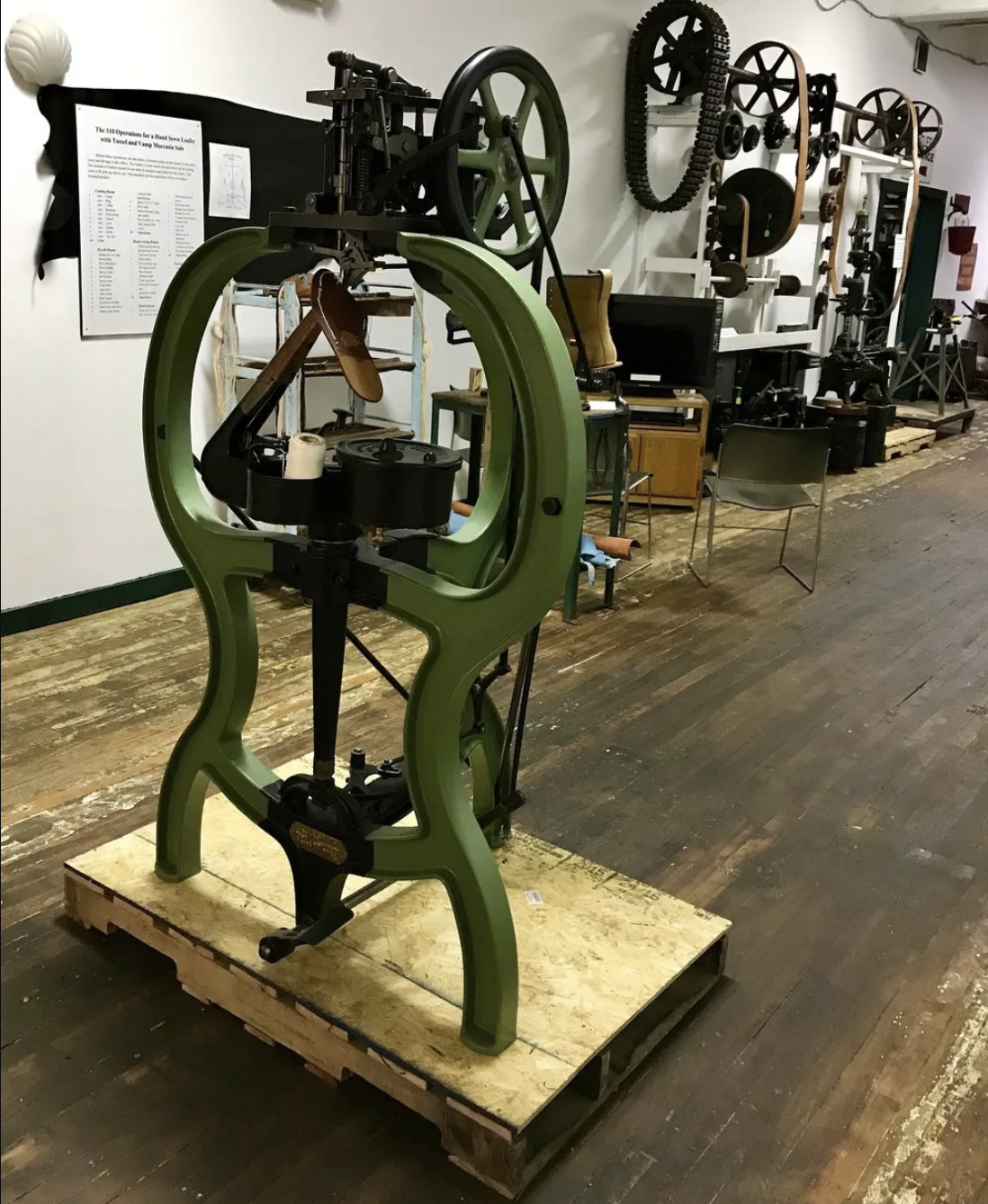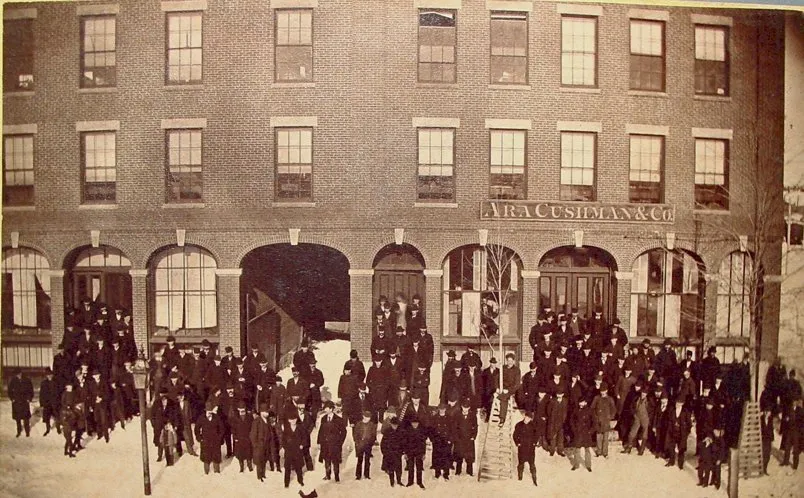Learn
Shoes + Shoemaking
A Brief History
About the same time that textile mills were starting in Lewiston, entrepreneurs were becoming the shoe barons of Auburn. There were several shoe shops started during the 1860s. A notable manufacturer was Ara Cushman who experimented with a canvas-top/leathersole shoe during the 1870s. It was his son, after the company became the Cushman Hollis Company, who, in 1904 introduced both white canvas shoes and athletic shoes, making Auburn the “White Shoe City of the World.” At its heyday, there were 2,100 persons employed, producing 26,000 shoes per day throughout several shops.
The industry would peak in the 1920s, when 12 major factories employed 8,000 workers making 70,000 shoes per day, or about 25 million pairs annually, making Auburn the fifth-largest shoe producer in the country. In 1917, one factory in Auburn alone was producing 75% of the world’s supply of white canvas shoes. While the mills steadily declined and then closed in the 20th-century, there are a number of important and successful shoemakers still operating in and around Lewiston-Auburn today.

Production
The making of a shoe is an involved process. The shoe industry dates back to colonial New England when shoes were produced by cobblers working at home or in small shops. The Industrial Revolution, with the invention of machines like the sewing machine, revolutionized the production of shoes. However, it was not until the 1880s that all the processes were mechanized. An Afro-American, Jan Matzeliger invented the “lasting machine” to mechanically affix the upper to the sole in 1885. This machine could produce between 150 to 700 pairs of shoes in a day.
How many of you own or have ever owned a pair of hand-sewn loafers? Are you aware that to produce such a shoe, there are 110 separate steps involved—and that is just AFTER the Foreman has collected the leather, the tags (instructions) and sorted the leather.
The steps workers performed included 24 separate cuts in a Cutting Room, using “dies” or patterns for the pieces that would become the shoe. Then, there were 51 operations in the Pre-fit Room. The Hand-sewing Room involved exactly what it says—hand-stitching. And handstitching was done as “piece-work” and sometimes was sent home with the women and girls who earned more, the more shoes they completed. In the Finish Room, operations included the lasting process, roughing the bottom and sole, attaching the sole to the upper, then molding and drying, after the leather had been steamed. Lastly, shoes were sent to a Packing Room where boxes were assembled and shoes placed in them. Then it was off to the Shipping Department.

Meet Ara Cushman
In 1853, Ara Cushman started making shoes by hand in West Minot, Maine. Soon, he started driving through the state with horse-lads of shoes. He became successful enough that he employed more men to help him, but still did most of the work by hand.
In 1863, Ara moved to Auburn to take advantage of the new possibilities that the railroad and canals provided. In 1888, his business incorporated and became the Ara Cushman Co. He was one of the first shoe manufacturers to take advantage of all the new, efficient shoe machinery that was being invented, especially the McKay stitcher, which attached the “uppers” to the soles. By 1880, he was employing 1,000 workers who were famous for producing canvas shoes for men, women and children. These were the first sneakers. All those changes to the shoe industry in just 27 years.
In his shoe factories, Ara Cushman organized a profit-sharing program for his employees. They got to keep a percentage of the profits each year. His company later became the Cushman-Hollis Co. and the factory was located where Denny’s restaurant is today, on Court Street in Auburn.
Ara Cushman also gave back to the community. He helped raise the money to build the Universalist Church, and served on the committee that founded Maine General Hospital. He was a supporter of anti-slavery groups and pro-Temperance (against alcohol) groups.

